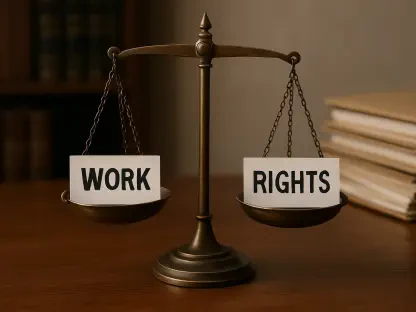Pennsylvania faces considerable challenges in its state hiring processes, aiming to bridge the gap between public sector efficiency and private sector speed. Governor Josh Shapiro initiated efforts to fast-track hiring within state agencies with aspirations to reduce the average time to fill job openings from 90 days to 50 days, a necessary move amid increasing workforce pressures. This drive not only seeks to streamline operations but also demonstrates how technology, particularly AI and data analytics, can be leveraged to optimize recruitment processes, making them more aligned with modern demands. Pennsylvania’s efforts could provide a blueprint for other states wrestling with similar issues.
Harnessing AI and Data for Speedier Recruitment
AI’s Impact on Job Posting and Interviews
Key among the strategies employed by Pennsylvania’s Office of Administration is integrating generative AI into human resources functions. Generative AI has proven particularly effective in updating job classifications and descriptions to remain accurate and relevant, a crucial factor in attracting suitable candidates. In addition to maintaining job postings, AI-generated tools also assist in crafting pertinent interview questions and summarizing interview notes, which greatly reduce the amount of manual labor involved in these tasks. A pilot program involving ChatGPT Enterprises showed promising outcomes, with 85% of participating staff acknowledging the value of AI technology in improving task efficiency. These advancements reflect not just the success within Pennsylvania but align with ongoing explorations of AI utility in other states, like California and Michigan, where similar implementations aim to advance hiring outcomes through technology.
Data Analytics Streamlining the Process Further
Complementing AI applications, Pennsylvania leverages data analytics tools, including an applicant tracking system and comprehensive dashboards, to further refine hiring processes. These systems provide essential insights that pinpoint specific hindrances within the recruitment cycle, such as prolonged interview stages, which can extend up to 30 days. By elucidating these bottlenecks, the data gathered offers actionable intelligence, guiding HR teams towards targeted solutions like improving interview training for managers or modifying interview scheduling protocols. The automation of candidate communication fostered by dashboard insights contributes to accelerating interview appointments, thereby edging closer to the state’s ambitious 50-day hiring goal. These technological insights reinforce a data-driven approach, illustrating the transformational impact such innovation can have on government operations.
Future Implications of AI in State Hiring
Potential for Broad Application Across States
Pennsylvania’s initiative underscores a broader shift towards technological adoption in state recruitment strategies, reflecting a growing consensus of AI’s potential advantages in public sector human resources. This trend notes the burgeoning role that advanced technologies play in modernizing traditional operations and sets a potent foundation for exploring future innovations. As more states recognize these merits, the emerging pattern of AI-backed recruitment could stimulate both internal and systemic changes across government frameworks. By highlighting the efficiencies, such developments offer key lessons for leaders grappling with analogous challenges in human resource management, spurring ongoing discourse and best practices.
The Path Ahead for Technological Integration
Overcoming hiring delays with AI represents more than mere operational enhancement; it symbolizes a shift towards embracing technology in government processes at large. As adoption proliferates, Pennsylvania’s journey provides critical insight and a model for developing sustainable, tech-centric staffing solutions. The lessons learned reveal both the opportunities and complexities ahead, opening paths for iterative improvement in recruitment. Consequently, continuous integration of advanced tools promises to redefine job market landscapes and revolutionize how state entities approach the multifaceted demands of workforce recruitment and management, fortifying future capabilities for efficient and effective operations.
Moving Forward with Technology-Driven Strategies
Pennsylvania is tackling major hurdles in its state employment processes, aiming to reduce the discrepancy between the efficiency found in the public sector and the speed seen in the private sector. Governor Josh Shapiro has embarked on an initiative to expedite hiring in state agencies, targeting a cut in the average time it takes to fill job positions from 90 days down to 50 days. This adjustment is crucial amidst growing workforce challenges. The initiative not only seeks to enhance operational efficiency but also illustrates how technology, particularly artificial intelligence and data analytics, can be employed to modernize and improve recruitment processes. By integrating these technologies, Pennsylvania aims to develop a more efficient system that meets contemporary demands. The state’s efforts could serve as a model for other states facing similar challenges in the hiring landscape. This approach highlights how embracing innovation can pave the way for more responsive and effective public sector employment practices.









